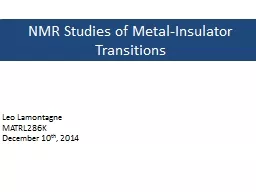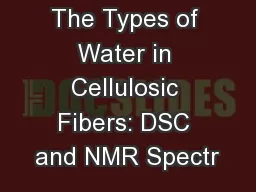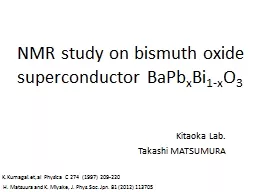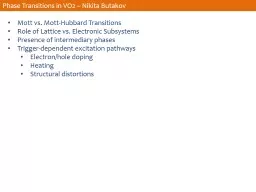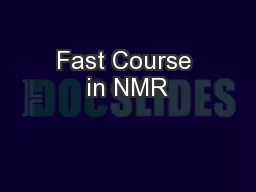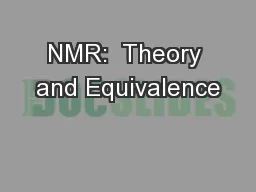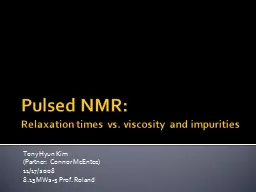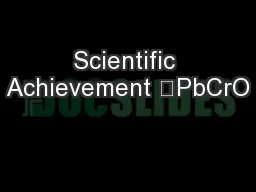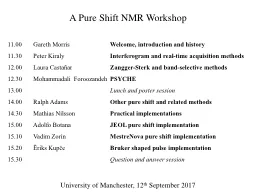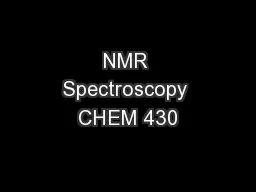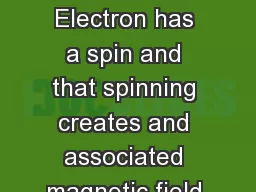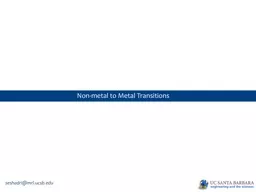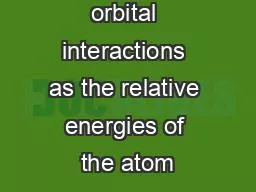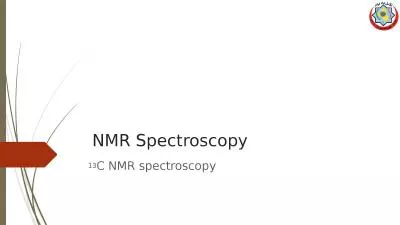PPT-NMR Studies of Metal-Insulator Transitions
Author : mitsue-stanley | Published Date : 2016-08-08
Leo Lamontagne MATRL286K December 10 th 2014 Intro to Nuclear Magnetic Resonance 2 Element specific technique utilizing nuclear spins of atoms Nuclear spins are
Presentation Embed Code
Download Presentation
Download Presentation The PPT/PDF document "NMR Studies of Metal-Insulator Transitio..." is the property of its rightful owner. Permission is granted to download and print the materials on this website for personal, non-commercial use only, and to display it on your personal computer provided you do not modify the materials and that you retain all copyright notices contained in the materials. By downloading content from our website, you accept the terms of this agreement.
NMR Studies of Metal-Insulator Transitions: Transcript
Download Rules Of Document
"NMR Studies of Metal-Insulator Transitions"The content belongs to its owner. You may download and print it for personal use, without modification, and keep all copyright notices. By downloading, you agree to these terms.
Related Documents

